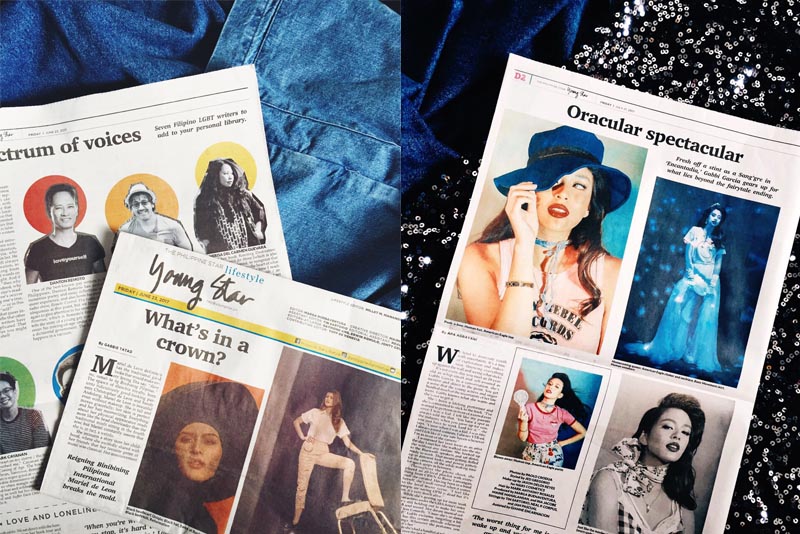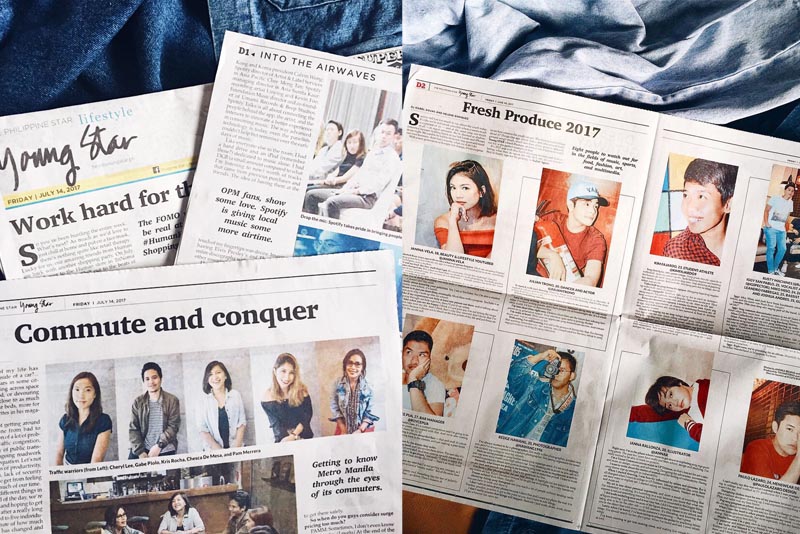Between the bylines

Young STAR is about highlighting and featuring up-and-coming talents in different industries. From music to fashion to art, we aim to cultivate a creative community among our readers to inspire other kids to do the same. The Philippine STAR
Print media offers an experience that no screen can offer
MANILA, Philippines — There has been a lot of talk outside the Twitter circle — or more specifically, Facebook — about how the youth is killing print media. They say we tend to browse content on our phones, ignoring the art of the paper. Honestly, it’s partly true. When you paint a picture of a typical millennial, chances are there’s a phone or a tablet in her hand. But what those pictures don’t portray is how social media or the internet can be a burden when consuming content.
We may accidentally stumble upon fake news or read unsolicited opinion from friends (the election season and the recent SONA was especially stressful. These things are inevitable in a space as free as the internet. While we should all be responsible for what we share online, not everyone thinks before posting or publishing.
This is where publications come in. The brand they have built for years backs up the legitimacy of the information they share. There is a team responsible for the opinions they publish, a welcome comfort and trust in the age of alternative facts. This is something I learned firsthand from working in The Philippine STAR.
It’s been almost four years since I started working in print. It’s easy to say that there are pros and cons for each, but as someone who prefers books and magazines over Barbie dolls, print will always have an advantage in my reading experience.
Tangible history
Back when I was 17, I started an online magazine called Stache. Its readership reached over three million views in a span of three years, with over a hundred contributors in total. Our medium may have been digital, but our collective love for print media was something that drove us together.
Case in point: our weekly meetings usually consisted of brainstorming sessions and browsing magazines we have collected over the years. Kinfolk, Cereal, i-D, Dazed and Confused and Wonderland. Those were the titles that inspired us. We believed in the power of creativity in understanding one’s self, and that’s something we want to communicate with our readers no matter what the medium is.
It just so happened that in the three years that we were operating — with virtually no money, take note — we published our content exclusively online. It was free and easy, but the ultimate goal was to be published in print. We wanted to be the nexti-D or Wonderland Magazine. We wanted to be in the hands of the next batch of creatives who will pore over our magazine, page after page. Printed media are essentially time capsules that will never be lost in your bookmarks folder. Constantly seeing it on your shelf will remind you of the stories that inspired you to move forward.
There’s still power in seeing your photograph, article or illustration immortalized on paper. It’s like your words and images are seeping through history, making its permanence known to everyone who holds it.

Seeing my editors’ attention and care when it comes to producing content, editing, and doing the layout opened my eyes to how much work is put in one story. The Philippine STAR
What you print is what you get
In 2013, I started working in Young STAR, the youth section of The Philippine STAR as an editorial assistant. Seeing my editors’ attention and care when it comes to producing content, editing, and doing the layout opened my eyes to how much work is put in one story.
Admittedly, my previous workflow for digital content was lax. We had the comfort of having the edit button at our disposal. We could get away with editing our mistakes even after we hit publish. We had legroom for error, no matter how much we try to ignore it.
Working with Young STAR taught me to make better editorial decisions to serve the story the best possible way. Every sentence has a purpose, and that is to serve our readers and to share important stories that are worth reading. With print, there’s finality and credibility. What you print is literally what you get. There’s no turning back as soon as you distribute it to your readers, and this requires focus and attention. This is the reason why print media is held to a very high standard.
Touch and feel
Print media’s advantage is the experience it provides the readers. For designers, the texture of the paper contributes to how the readers will consume the stories. Some magazines are glossy to heighten the luxurious feel, while others are printed on matte paper to exude the rawness of their content.
Broadsheets are especially interesting because of its scale and size. Their stories are always timely, and they are a good reminder of the current state of the world. The pages hold a piece of time that will affect future events, and its feeling and meaning will evolve as the world does.
Breaking screen barriers
Young STAR is about highlighting and featuring up-and-coming talents in different industries. From music to fashion to art, we aim to cultivate a creative community among our readers to inspire other kids to do the same.
When it comes to sharing content online, there’s a barrier between the publication and the reader. Your stories are contained in a digital box that holds temporary information — at least in the attention span of the readers. Your readers consume the content, and you try to connect with them in the best way you can. But there is so much more to the reading experience that a computer can’t replicate. If you grew up in the early 2000s, you’d understand the hype that the “Harry Potter” series once had. People would stay up late, queuing in line for the latest book release, talking about the boy wizard who lived. Imagine if the books were first published on digital, will there be lines at the store? Will there be a solid community behind the fantasy?
The same culture can be seen in today’s zine community. Conventions like Komiket and Komikon are held by artists who still believe in self-publishing. The role of social media is still essential in bringing these people together, but it’s their love for creating tangible zines that sparked their idea in the first place.
Whoever said that the youth aren’t as passionate towards printed media is looking at the wrong place. If you look beyond the screen, there’s a thriving community of creatives who are keeping it alive.















